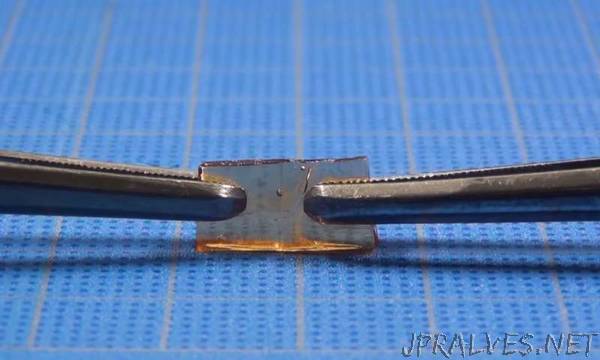
“A small team of researchers at the University of Tokyo has created a polymer that can be repaired when broken into two parts by applying a small amount of pressure at room temperature. In their paper published in the journal Science, the group describes how they came upon the polymer, how it was made, and how well it can be repaired.
Engineers around the world have been working hard to find a type of glass or plastic that can be healed easily when broken to address the problem of broken screens on phones and other portable devices. While some progress has been made, there still exists a need for something better. In this new effort, the researchers report on a new type of plastic that can be healed by simply pressing the broken pieces back together.
As the researchers describe it, a team member was investigating glue properties with polymers when they discovered that one of the polymers under study could mend itself just by pushing the pieces together. Intrigued, the group looked closer. They found that the hydrogen bonds in the polymer formed in a way that did not crystallize, allowing the molecular chains to move freely. This allowed the bonds to re-form easily under just a small amount of pressure. After working with several configurations, the team settled on a polymer called polyether-thioureas (TUEG3)—it offered the best healing properties of those tested.
The researchers report that to test the material, they cut a small tile into to two pieces, then pressed the two pieces together into the original configuration using just a small force at room temperature. After 30 seconds, they further report, the healed tile could support a 300-gram weight. They note that pressing the material for longer amounts of times allows for even stronger bonds to form—eventually, after a couple of hours, the material reaches the same degree of bonding as it had prior to being cut or broken.
More work will have to be done with the material before it can be used in a smartphone screen, however, such as making it more transparent.”
